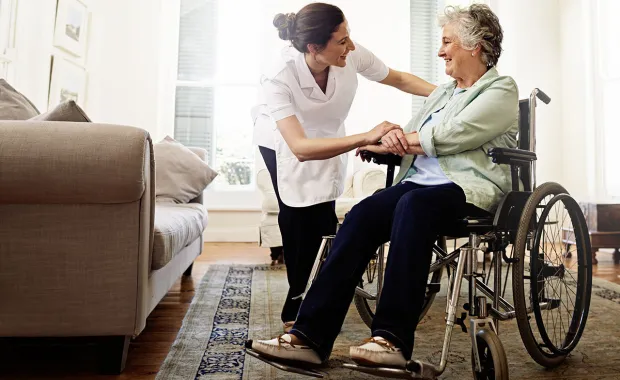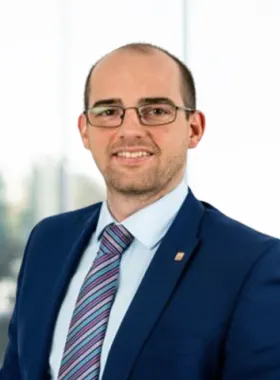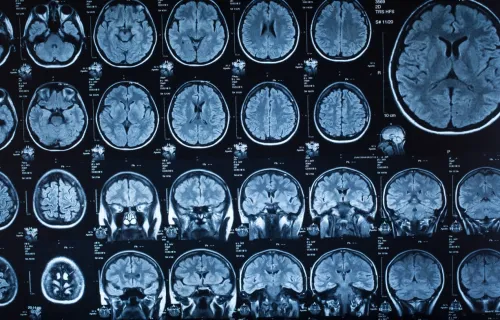Dans ce balado, Stuart Parsons, directeur, Soins de santé et services sociaux, Royaume-Uni et Australie, et Carla Dix, responsable du programme d’innovations stratégiques chez Llesiant Delta Wellbeing, discutent de l’avenir du secteur de la santé et des soins. Ils explorent les principales priorités du secteur de la santé et des soins et les obstacles au changement, en plus de partager leurs prédictions relatives à l’évolution de la santé et des soins au cours de la prochaine décennie.
CGI et Delta Wellbeing : un partenariat stratégique à long terme
Delta Wellbeing a choisi CGI comme partenaire stratégique à long terme pour améliorer les soins de santé et les services sociaux dans l’ouest du pays de Galles et dans d’autres régions. Grâce à Delta CONNECT, son nouveau programme de transformation numérique, Delta Wellbeing met en œuvre un nouveau modèle d’autoassistance et de soins proactifs pour améliorer le bien-être, favoriser l’autonomie et réduire les demandes pour des services sociaux et des soins de santé de courte ou de longue durée. L’objectif initial de ce partenariat est la transformation numérique des télésoins de l’entreprise en vue de la mise hors service des systèmes analogiques en 2025 grâce à la création d’une plateforme pour la prestation de nouveaux services numériques de santé et de soins.
L’avenir du secteur de la santé et des soins : grandes priorités
Au Royaume-Uni et partout dans le monde, les professionnels des soins de santé et des services sociaux font face à d’importants défis, notamment une demande accrue de services, une pénurie de main-d’œuvre et des contraintes budgétaires. Par conséquent, l’intégration de services pour réaliser des gains d’efficacité dans l’ensemble de l’écosystème des soins de santé est une priorité clé. Bien que l’intégration fasse l’objet de discussions depuis quelques années, elle n’a pas encore été mise en œuvre dans l’ensemble des services de santé et des services sociaux. L’amélioration de l’efficacité du travail, ainsi que la réduction du gaspillage et du travail cloisonné contribueront à stimuler le changement afin d’obtenir de meilleurs résultats pour les clients et les patients.
Pour alléger les points de pression dans les services de santé et de soins et effectuer des changements pour adopter un nouveau modèle de prestation de services, l’accent doit être mis sur la surveillance proactive du mode de vie et la sécurité et la santé au quotidien. Une approche maximisée de la technologie et des données nous aidera à en apprendre davantage sur les personnes et à offrir des services plus personnalisés.
Tirer parti de la technologie pour surmonter les obstacles et favoriser le changement
Aujourd’hui, les professionnels de la santé ont tendance à travailler en vase clos : la santé d’un côté, les services sociaux de l’autre, et une myriade de groupes entre les deux. Il faut tirer parti du partage des données pour éliminer les obstacles entre ces entités. L’interconnectivité aidera à transformer l’information en perspective et à améliorer notre compréhension des patients à mesure que nous recueillons et consolidons tous les renseignements sur leur mode de vie et leurs appareils médicaux. Une approche de collecte de données normalisée à plateforme unique facilitera cette transformation numérique. De plus, l’intégration de ces systèmes aide la personne et son cercle de soins à mieux s’informer et à participer davantage à la prestation de services de soins, ce qui améliore ultimement les résultats en matière de santé.
Regard vers l’avenir : prédictions pour le secteur des soins de santé
Au cours de la prochaine décennie, nous aurons l’occasion de transformer la réalité de nos utilisateurs de services. Le système de partage de données nous offrira une vue d’ensemble de chaque patient, assurera l’efficience des systèmes et l’efficacité du personnel, et garantira de meilleurs résultats dans l’ensemble de nos services de santé et sociaux.
Un programme de transformation numérique, comme Delta CONNECT, nous permettra éventuellement d’adopter une vision interorganisationnelle unique de chaque patient dans une perspective davantage axée sur le lieu. Cela pourrait être reproductible avec une approche unique pour toutes les régions qui serait en mesure de fournir des services de soins complètement personnalisés et d’améliorer les résultats en matière de santé.
Idéalement, cette technologie serait au cœur de nos habitudes quotidiennes pour dresser un portrait précis d’une personne et documenter la meilleure façon de la maintenir en bonne santé et de l’aider lorsqu’elle en a besoin.
Pour plus d’information de Stuart Parsons et Carla Dix sur le partenariat entre Delta Wellbeing et CGI, écoutez l’intégralité du balado.
Écoutez le premier balado de la série pour en apprendre davantage sur les grands défis du secteur de la santé et des soins et sur la façon dont la technologie numérique peut nous aider à les surmonter. Pour toute question ou remarque, communiquez avec Stuart Parsons.
Read the transcript:
- Introduction
-
Divya Bedi: Hello, and welcome to our second in a three-part podcast series, focusing on digital health and care, where we will not only be looking at the current challenges in the marketplace, but how the right digital technology and strategic partnerships can overcome these and pave the way for new models of care, putting the patients at the heart of the services being delivered. My name is Divya Bedi, Project Manager, CGI, and I will be your host for this series. CGI has been selected by Delta Wellbeing as its long-term strategic partner to improve health and social care in West Wales and beyond, through its new digital transformation program. The Delta Connect program is transforming the way health and social care is delivered, implementing a new model of self-help and proactive care to improve wellbeing, help people stay independent, and reduce demands on long-term or acute health and social care. The initial focus of the partnership between CGI and Delta is the digitization of Delta Wellbeing's telecare services, in preparation for the upcoming analog switch-off in 2025, creating a platform for new digital health and care service delivery. In our first podcast, with Paul and Stuart, we covered the current challenges we are facing, and the role technology has in overcoming these. Today, we will be focusing on the future of health and care over the next few years. With me, we have Carla Dix, Strategic Innovations Program Lead from Delta Wellbeing.
Carla Dix: Hi, there.
Divya Bedi: And Stuart Parsons, Director Consulting Services for Health and Care from CGI.
Stuart Parsons: Hi, Divya.
- The future of health and care: Key priorities
-
Divya Bedi: Hi, guys. Let me start by asking my first question. What are some of the key priorities moving forward to addressing health and care over the next few years?
Carla Dix: Well, from our perspective here in West Wales, there are some significant challenges that all our health and social care colleagues are actually going to be facing. And I suppose it's not really unique to West Wales. This is something that we're seeing across the whole of the UK. We've got still that increased level of demand for those services. We have workforce challenges and some of those budget constraints that we hear about regularly across our media. I think certainly for us, a priority is about that integration—to be able to provide those efficiencies across health and social care.
We've had lots of conversations about integration over the years, but I think we're not really at a point where there is a level of true integration. Quite lucky locally that we have a little bit more of a joined-up approach, certainly through the transformation projects. For things like our connect service, we work very closely across health and social care. We've been afforded the opportunities to really drive some of that change that will allow us to be able to join things up a little bit more. As I said, to become more efficient in the ways that our staff are able to do their jobs, to cut out some of that waste, cut out that silo working.
I think there are obvious benefits there, not only to our staff and to be able to provide better outcomes for our clients, but also about meeting some of those budget challenges, shall we say. What we're aiming to do then is, I suppose, change the way we're working by being proactive, by being preventative. I appreciate that sometimes that's a bit of a challenge in the world that we're in because we have got all of this demand that needs us to be reactive. However, we have to do something different to be able to support some of those pressure points in our health and care services and make some change by providing a new model of delivery, really.
Stuart Parsons: To match Carla's thinking, I think for me, it's a real focus on proactive lifestyle monitoring and keeping us safe and well in our day-to-day lives. Through this maximized technology that underpins the new service model, and tuning, and data approach that creates a proven case study, we're able to tailor care to individuals as we learn more about them, and the care they need to deliver a more personalized service provision. Commissioners have often historically struggled on what to provide, but I'm conscious when I say this, that I recognize there's still quite an education piece in all this, to undertake and explain the benefits of this type of new approach, and how all that technology can come together, as well.
- Harnessing technology to overcome barriers and drive change
-
Divya Bedi: Absolutely. Like with this, what do you think are some of the barriers to change, and how can technology address these barriers and drive the change forward?
Carla Dix: I think we've still got some challenges with the technology. I think we still work within a fairly, well, I'd say it's quite an old-fashioned world with the analog side of it. However, the digital switch, I think, is going to push the boundaries, and allow us to push the boundaries, certainly. I think we're coming from a perspective, and again, this is about the tech that's out there. How do we actually make best use of the data that we've actually got coming from that? We need to provide those actionable insights, I suppose, and be proactive, and try to be predictive in the way they work, and to be more effective in the interventions that we put in place, and how we actually work for the clients.
I think giving us the opportunity to have a 360 view of a client, because we tend to work in those silos, where you've got health on one side, social care on another, and a myriad of other parties that actually work with these individuals and they never join up, and they never necessarily work together. You've got people bouncing around systems, really. I think if we're able to join things up, and get that data working, because invariably, we've not got one system for all, then we're able to make better use of that data. Also, with the tech that's already out there, that people are already using, it will allow us to encourage individuals to bring their own devices to the table, so we can actually utilize their data and monitor.
Again, back to what Stuart said about that monitoring of patterns and behavior, allowing us to then be better prepared for what may come through in the future, really. It also allows us to support that individual who may end up in an acute situation, who may already be used to them being monitored, and being supported by services like ours. Allow them to perhaps take a little bit more interest in their own health and social care world, and become engaged and co-produce in those areas, which I think allows then for a much smoother transition into some of those perhaps statutory service provisions that may be needed. Allows us, again, like I said, to provide better outcomes for our clients, ultimately.
Stuart Parsons: Yes, for me, I think with the breaking down of barriers between data sharing, there's naturally a huge business change element that goes into that. Having a standardized single platform approach for the collection of data just really helps us transform all that information into insight, and improve and enhance understanding of the individual, as we gather and consolidate information from all aspects of their lifestyle and the devices they're using, as Carla mentioned. It's that type of change when a real plethora of systems can be incorporated that can also help the individual in their circle of care around them, be more informed and more involved in their care delivery and support the choices they make. What we would like to see is ultimately that improving people's health outcomes.
- Looking ahead: Predictions for the healthcare industry in the next decade
-
Divya Bedi: With these new improvements, how do you think health and care industry will look like in the next 5 to 10 years?
Carla Dix: I think if I look a little inwards from a Wales perspective, we have an opportunity to make a significant difference to our service users, because we're quite a small nation at the end of the day. Ultimately, our population have similar needs and similar requirements, really. With a system that's going to allow us to share data, and to have that 360 view of individuals, we're going to be able to do things differently. We're going to be able to have efficient systems, allow our staff to be more effective, and to provide better outcomes across our health and social care services. I think the reality of it is, at this present time, it's too risky not to do something differently than it is to take on those risks of actually transforming and being innovative and pushing the boundaries of what we're able to do. Something with regards to that sort of digital platform, yes, we have to do that. I think the work that we're hoping to do with CGI, or will be doing with CGI, is going to take things to the next level, and I think transform the way that health and social care services look, certainly in the not-too-distant future, as well.
Stuart Parsons: Yes, like Carla, the exciting thing for me is that what we're talking about now, where we're headed, what we're creating, should allow us to construct a single view of an individual from a more place-based perspective, so the cross-organizational view. Also, that could be repeatable and a single approach for all regions, with a capability that's going to provide a personalized flavor for each individual that will result in what I believe to be a truly bespoke care service. For me as an individual, I, again, believe it can result in improved health outcomes for me, too, and for those individuals. While we're keeping individuals and those around that person in their social care also informed, so it's just fantastic to think about, really, in that sense. If I dared to dream, it would be the use of this technology as part of my everyday lifestyle that's ubiquitous in a helpful way, building this picture of me and how best to keep me well and, obviously, when I need it, how best to help me.
Divya Bedi: Thank you for your time today. I hope you found this very informative and some great points were raised by both Carla and Stuart. I hope you're excited for the final podcast where we will continue this conversation with Gareth Rees and discuss how partnering can bring in success for health and care. If you want to find out more, please visit the CGI website or reach out to us on LinkedIn. Thank you.





